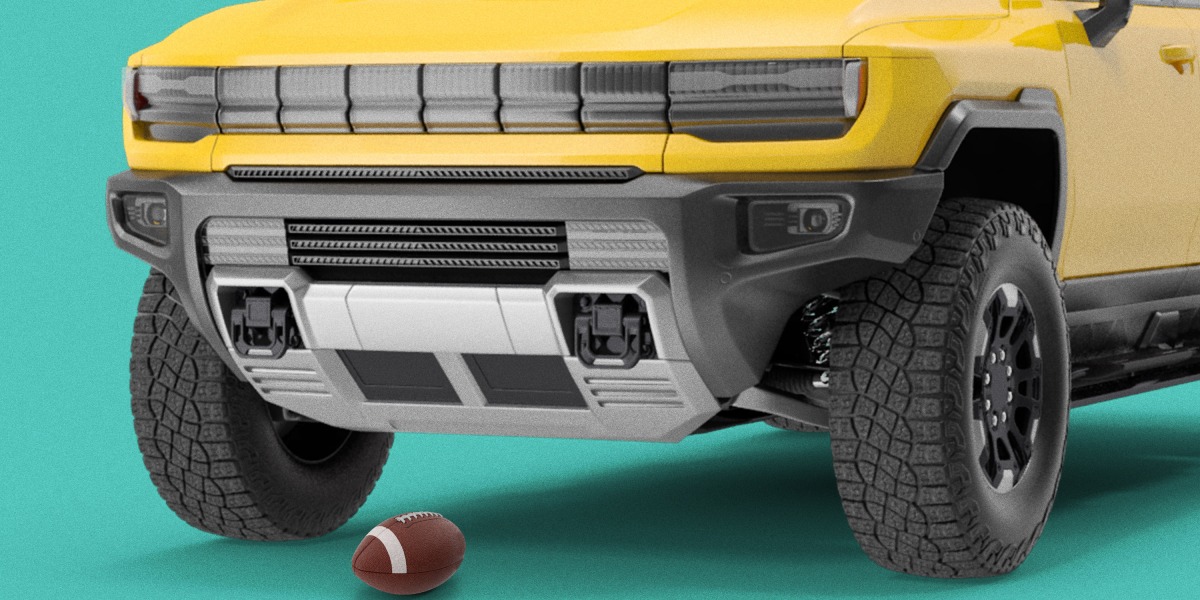
But the scale of the difference between the scenarios is pretty eye-opening. Take the difference between the worst case and what the study considers “status quo,” for example. When it comes to lithium, in a status quo scenario where people drive as much as they do now, we’ll need 306,000 tons in 2050. If batteries get bigger, that number could inflate to 483,000 tons—50% more.
We’re not going to run out of the materials we need to manufacture batteries, but every mine we need to build comes with consequences for both people and the environment. Mining often produces pollution, especially of waterways, and the industry has been tied to human rights abuses around the world. So bigger batteries mean bigger consequences to deal with.
Bigger cars will have a bigger climate impact, too. In the most dramatic example, compare an EV Hummer with a gas-powered sedan.
EVs aren’t totally zero-emissions, even though they don’t burn fossil fuels onboard. Building them, especially their batteries, requires energy. And the electricity that powers most EVs today comes from the grid, which is powered at least partly by fossil fuels almost everywhere.
If you consider the lifetime emissions from building a battery and charging an EV, an electric model of the same car will be better than the gas-powered version in almost every scenario. But comparing different models can be a different story. A gas-powered Toyota Corolla is actually responsible for less greenhouse gas per mile than an EV Hummer, according to estimates from Quartz research. So right now, that Hummer is worse for the climate.
To be clear, I’m not saying that we should all go buy old gas-powered Corollas. EVs, even gigantic ones, keep getting cleaner. An EV Hummer charged on the 2040 grid, which should have more renewables in the power mix, will have lower emissions than one hitting the roads today. And hopefully by that time we’ll have cut down on climate impacts from mining and heavy industry too.
So what now?
It would be great if we could drive less in general. I live in a walkable city right now, so I don’t have a car at all, and I love it. If I never had to drive again, it would be too soon. Policy measures could help more cities look more like mine, or at least support public transit and walking and cycling infrastructure to cut down on car trips.
